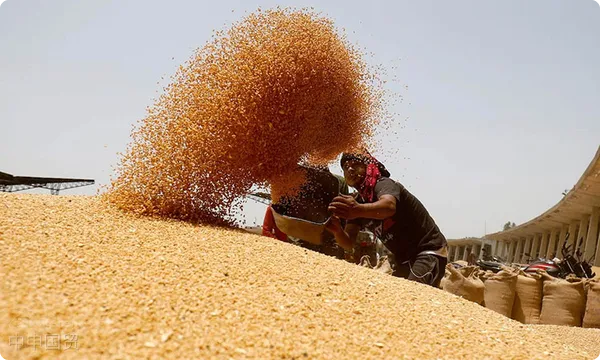- Shanghai Zhongshen International Trade Co., Ltd. - Two decades of trade agency expertise.
- Service Hotline: 139 1787 2118
Recently, many foreign media reported that the Indian government plans to take a variety of measures, including reducing import tariffs, implementing inventory restrictions, and selling reserve wheat through the open market, to increase wheat supply, curb the high domestic wheat prices, and address the potential risks brought about by the significant reduction in inventory. This series of measures not only reflects the Indian governments high attention to food security but also reveals the severe challenges brought by global climate change to agricultural production.

Current situation of wheat production in India
India is the worlds second - largest wheat producer, second only to China. However, in recent years, wheat production in India has faced many challenges. Since the beginning of this year, due to high temperatures and drought, Indias wheat output is expected to be 6.25% lower than the official forecast of 112 million tons. This downward trend in output has not only affected the domestic market supply but also had a chain reaction on the global wheat market.
Six years ago, the Indian government decided to impose a 44% tariff on wheat imports, and this policy almost completely curbed the wheat imports of domestic grain merchants. However, with the decline in domestic wheat production and the reduction in inventory, this high - tariff policy is facing pressure for re - evaluation.
Reasons for the decline in wheat inventory
According to the view of Chopra, the Indian minister in charge of food and public distribution, in April this year, to ensure the smooth progress of the general election and win public support, the Indian government sold a record - high of more than 10 million tons of wheat to the private sector to stabilize prices. In addition, since the start of wheat harvesting, the Indian government has only purchased 26.2 million tons of wheat, failing to reach the national inventory target of 30 - 32 million tons. These factors combined have led to the official wheat reserve in India dropping to 7.5 million tons, the lowest level in 16 years.
Government response measures
Facing the sharp decline in wheat inventory and the continuous rise in prices, the Indian government is actively looking for countermeasures. Chopra said, Implementing inventory restrictions is just one option. We have many other tools at our disposal to ensure that wheat prices do not rise abnormally. He said the government could consider other options, such as reducing import duties or allowing duty - free imports.
The Hindustan Times reported that Indian traders have been demanding that the government reduce the wheat import duty so that imports can be resumed when prices are low. But this measure is very sensitive to farmers. The credit rating agency S&P quoted the view of the Indian agricultural department in a report, saying that Indias permission for wheat imports may put pressure on farmers intention to grow wheat. The government is also reluctant to let increased imports put pressure on farmers returns before the general election.,
Potential impact of imported wheat
How much wheat will India need to import? The Hindustan Times reported that India may import 1 million or 2 million tons of wheat. M. J. Khan, the president of the Indian Food and Agriculture Association, has also called for the government to preferably allow private trade to import several million tons of wheat through means such as reducing tariffs.
Reducing import tariffs or allowing duty - free imports will undoubtedly increase the domestic wheat supply and ease the pressure of price increases. However, this measure may also have a negative impact on domestic farmers, especially on the eve of the general election. The government must find a balance between ensuring food supply and protecting farmers interests.
Reaction of the global market
As the worlds second - largest wheat producer, changes in Indias production and policies have an important impact on the global wheat market. The decline in Indias wheat output and the increase in import demand may drive up international wheat prices. At the same time, the policy adjustment of the Indian government will also have a profound impact on the global wheat trade pattern.
Future outlook
Against the backdrop of global climate change and frequent extreme weather, agricultural production faces increasing uncertainties. The decline in Indias wheat output and the reduction in inventory reflect the severe challenges faced by global food security. In the future, the Indian government needs to find a balance between ensuring food supply and protecting farmers interests, and at the same time strengthen the construction of agricultural infrastructure to improve the risk - resistance ability of agricultural production.
Related Recommendations
? 2025. All Rights Reserved. 滬ICP備2023007705號-2  PSB Record: Shanghai No.31011502009912
PSB Record: Shanghai No.31011502009912









